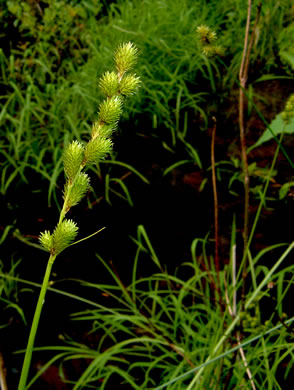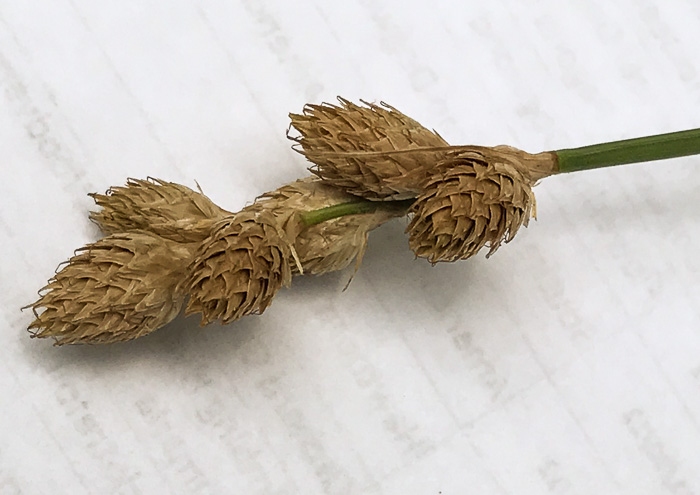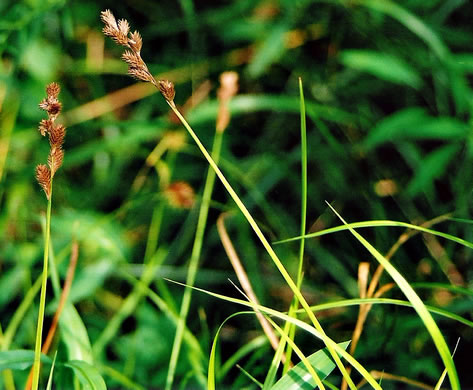Spermatophytes (seed plants): Angiosperms (flowering plants): Monocots: Commelinids: Poales
WEAKLEY'S FLORA OF THE SOUTHEASTERN US (10/20/20):
Carex tribuloides
FAMILY
Cyperaceae
Go to FSUS key
Dig deeper at SERNEC, a consortium of southeastern herbaria.
Read more about Carex at Vascular Plants of North Carolina.
SYNONYMOUS WITH
PLANTS NATIONAL DATABASE:
Carex tribuloides var. tribuloides
FAMILY
Cyperaceae
INCLUDED WITHIN VASCULAR FLORA OF THE CAROLINAS (Radford, Ahles, & Bell, 1968) 030-17-030:
Carex tribuloides FAMILY Cyperaceae
COMMON NAME:
Blunt Broom Sedge
To see larger pictures, click or hover over the thumbnails.
Terry Holdsclaw tdh_c_tribuloides_tribu_1
May Iredell County NC
Inflorescences straight and stiff, the lower spikes overlapping, per Weakley's Flora (2012).
Terry Holdsclaw tdh_c_tribuloides_tribu_2
July Iredell County NC
Spikes 6-15, overlapping or distinct, ovoid-oblong to globose, per Flora of North America.
WEAKLEY'S FLORA OF THE SOUTHEASTERN US (10/20/20):
Carex tribuloides
FAMILY
Cyperaceae
SYNONYMOUS WITH
PLANTS NATIONAL DATABASE:
Carex tribuloides var. tribuloides
FAMILY
Cyperaceae
INCLUDED WITHIN
VASCULAR FLORA OF THE CAROLINAS (Radford, Ahles, & Bell, 1968) 030-17-030:
Carex tribuloides
FAMILY
Cyperaceae
If a search such as "Carex leptalea var. leptalea" doesn't deliver the results you want, try "Carex leptalea".
Or, to minimize chances of a misspelling, try just "Carex le".
Less is more: If "pencil flower" doesn't deliver the results you want, try "pencil".




